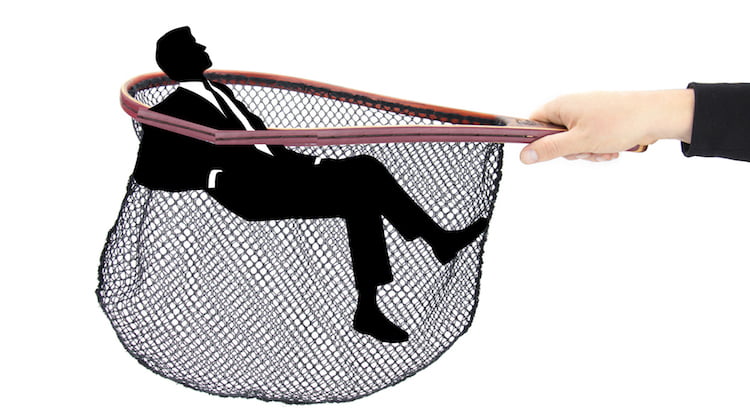Like big game stalking, finding a publisher requires great logistics, backup, research, the right stalking gear, good beaters, a degree of bravado, a keen eye for an opportunity to get in that tranquilliser shot and a guide who keeps in the background while you take the front line.
 Publishers, like most lions, tigers and elephants are hard to track down and even harder to find. They keep out of sight, have many lairs and dens and frequently appear to be dozing when you do manage to sneak up on one undetected. Not only do they keep to themselves but they tend to ignore lures and baits preferring instead to follow their own instincts and eat when they are ready.
Publishers, like most lions, tigers and elephants are hard to track down and even harder to find. They keep out of sight, have many lairs and dens and frequently appear to be dozing when you do manage to sneak up on one undetected. Not only do they keep to themselves but they tend to ignore lures and baits preferring instead to follow their own instincts and eat when they are ready.
Many try but few manage to bag one such is their wily behaviour and preference for solitude. Sometimes they inhabit the highest perches of very high high-rise buildings but they are equally as likely to be hunkered down amid the rubbish of an old printing works or in the darker recesses of a dusty decrepit warehouse. They can take you by surprise appearing out of nowhere at a writers festival and disappear before your eyes just as you are about to jump them. Creatures of the pre-dawn and twilight publishers are not only hard to find they are also masters of disguise. Who could tell a publisher if they saw one? Wrinkly, bristly, suave, smooth, chic, faded, glossy, polished, buffed, painted, bald or coiffed who could pick one out?

As a fair warning never assume publishers wear bow-ties and answer to the name of Perry though they may wear Perri Cutten and perhaps bows in their hair. Once many male publishers affected their singular personas by smoking a pipe, or at least appearing to by wearing a Meerschaum jauntily parked in the breast pocket of their tweeds but this is now frowned upon as publishers who are women find the object objectionable – the tobacco falls out in their limited edition crocodile skin Berkin totes.
Such are their wary characteristics that snaring a publisher calls for a strategy, a plan of attack. Every author who would be published must understand that while publishers as a crowd may be indistinguishable from the motley and hard to locate having the right equipment and good preparation can lead to a successful capture.
Presuming that you would wish to bring one back alive here’s what to do to give yourself the best chance of catching a publisher.

First, have the right equipment. This amounts to having a manuscript in part or entire. However, it is not quite so simple as that. Publishers don’t fall before any old manuscript waved under their noses. They are particular, fussy in fact so always check out how individual publishers will expect to receive your master-work. Details will be found on the webpages of almost every reputable publisher. Pay scrupulous attention to the required specifications and follow them to the letter. The right equipment, your manuscript, is presented to a prospective publisher in a submission. A submission takes the form of several integrated but distinct parts. Usually publishers instruct submitting authors to supply a precis of the work (be precise), a statement of the target readership (no waffle, just over 45 males and females interested in gardening with disposable incomes over $45,000 etc), a sample chapter or two, a CV (no waffle, make sure it is relevant to you as a gardener/writer) and present yourself through your submission as a real living personality with something worth saying. Not necessary at this: stage full frontal formal portraits, nor anything cute with Ruffy, Tuffy and Stinky.
 Second, have good beaters to flush out the game (the reticent publisher). This means keeping various proofs as evidence of your ‘authority’ to speak to gardeners. Keep a scrap book or common day-book where-in you record your speaking engagements, radio interviews, TV appearances, voluntary activities relevant to being a garden expert, Thank You letters and notes from garden club secretaries and other appreciative recipients of your horticultural wisdom. Without creating a beat-up about yourself (pun intended) be confident and moderately assertive in making your claim to being worthy of publishing. And don’t be deadly serious – or dull.
Second, have good beaters to flush out the game (the reticent publisher). This means keeping various proofs as evidence of your ‘authority’ to speak to gardeners. Keep a scrap book or common day-book where-in you record your speaking engagements, radio interviews, TV appearances, voluntary activities relevant to being a garden expert, Thank You letters and notes from garden club secretaries and other appreciative recipients of your horticultural wisdom. Without creating a beat-up about yourself (pun intended) be confident and moderately assertive in making your claim to being worthy of publishing. And don’t be deadly serious – or dull.
Third, research the right quarry to be targeted. Familiarise yourself with the house styles of various publishers and their designers. Where would you book fit in to a publisher’s range, would your manuscript fit the style? Know your style? Does your book call for black and white line drawings, cartoon type illustrations, full colour glossy pictures, double page spreads, close-up high resolution digital images, plant portraits, garden landscapes, reproduced paintings, maps, engravings and such like? Know your competitors for the last 5 years or so and demonstrate you know their books by referring to them. That sets the context very nicely. Comment on why your book will be different from these fore-runners. Publishers like doing deals with each other to co-publish and distribute internationally. Will your book ‘travel’? Say so.
Putting the research into a sales pitch using the above guide is your opportunity to prove to the publisher that your book will fit into their product range, indeed it might even plug a gap if you point out where it is. This suggestion shows why submitting authors should never fall back on a one-size-fits-all approach in your documentation. By all means keep a master document with key dot points but always re-write each submission by tailoring it to each publishing house. Pro-forma letters are a fatal sign that the intending published author has no insight into the way the writing and publishing business works.
 To pull off the capture of a publisher a certain degree of bravado is a requisite for final success. Doubtless there will be rejections, everyone gets them but the trick is to keep on keeping on. Nowadays this can mean taking things in a new direction rather than banging relentlessly on publisher’s doors. So instead of bruising your ego – and your knuckles put your energy into investigating your options:
To pull off the capture of a publisher a certain degree of bravado is a requisite for final success. Doubtless there will be rejections, everyone gets them but the trick is to keep on keeping on. Nowadays this can mean taking things in a new direction rather than banging relentlessly on publisher’s doors. So instead of bruising your ego – and your knuckles put your energy into investigating your options:
• Self publishing – expensive and then you have to store them, sell them, track sales, pursue follow-on sales, market, promote. Beware being tagged as a vanity publisher.
• Blogging – offers the possibility of a serial format for self-publishing on-line either via your own webpage or that of another on-line publisher such as GardenDrum. It can help generate a readership that may impress a book publisher.
• E-publishing through e-reader downloads. There are several websites that provide a platform to authors for producing e-reader ready manuscripts. These cost. Innovative entrepreneurs of this technology usually offer other services too – editing, layout, design etc for which they charge. Some of these businesses also offer services that submit your ‘book’ to major sales companies such as Amazon and Kindle. More costs. This manner of publishing is designed in the main for novels and other word-dense texts. Illustrations, diagrams and the like can be difficult to insert, especially if there are many throughout the text. Navigation can be effected to the detriment of the flow and readability of the ‘book’.
• Profile building means going back to your audience, expanding it, going further afield and developing yourself as a gardening identity and authority. The realisation that you are not quite the major attraction to publishers that you thought were can be quite daunting. Having been persuaded by friends that you ought to write and put yourself out there in front and centre needs some reappraisal when things don’t work out as you expect. However, keep calm, stay cool and carry on. Now is not the time to chuck it all in and forget about being published. Nor is it time to seek counselling, or solace in the bottle. It is time to refocus your energy and ask yourself hard questions.
 At this point some authors seek the help of paid editors, others ask relatives to read their manuscripts with a critical eye; the brave may even ask their life partner. All are risky means of getting feedback; some cost money, some come at personal and emotional costs. In the end the author must take responsibility for his manuscript (or hers) by asking the same hard questions any other reader might pose:
At this point some authors seek the help of paid editors, others ask relatives to read their manuscripts with a critical eye; the brave may even ask their life partner. All are risky means of getting feedback; some cost money, some come at personal and emotional costs. In the end the author must take responsibility for his manuscript (or hers) by asking the same hard questions any other reader might pose:
“Is this boring reading?”, ‘Why is this dull.” “How else can I say this.” “Is this writing too complex?” “How can I simplify it?”, “How can I make this fun?” “Does this jar, or flow?” “Can I restructure it so it is better.” “Can I be irreverent, cheeky or opinionated?”, ”Do these personal observations add to what I am saying here?”, “If I write this what does it say about me as a person?”. “Am I prepared to expose my thoughts and feelings to strangers in what I write?”, “Am I ready for what comes after my book comes out – the selling of my book and myself?”
Let’s face it; Australia is a small market for any sort of book and not being a bodice ripper your gardening book is probably not going to be a runaway smash hit. More likely it will achieve modest success. There is not much room in the limelight for new stars to shine Down Under, so why bother trying to break down the barriers to fame erected by the ex-wrestler-turned landscaper and his ilk?
There is a better way. Go overseas. Travel. Burst your boiler to get invited to speak at a gardener’s conference. You have to push yourself, really push your boat out but it is worth it. Follow pretty much the same tips to reel in a publisher; do the research, target the groups most likely, send your resume to conference planning groups. Be prepared to pay to attend the first conference. The experience will be invaluable. Be as engaged as you wish with every aspect of the conference but stay focussed: find out where the next conference will be, button-hole the chairman and planners, chat them up on the coaches, stroll with them around the open gardens, demonstrate your expertise and knowledge and keep well away from being bombastic, parochial or fawning. Be yourself but be there. Building networks overseas is equally as good for profile building as being a media mega-star in Australia. And it can be great fun too, even if you are not conversant in French, Spanish, German and Italian.
Eventually that elusive publisher will be in your sights, but surprise surprise he will pull the trigger. Be ready for the explosion that follows. You may well find yourself stuffed – though rarely mounted but more of that when we look at THE CONTRACT.
